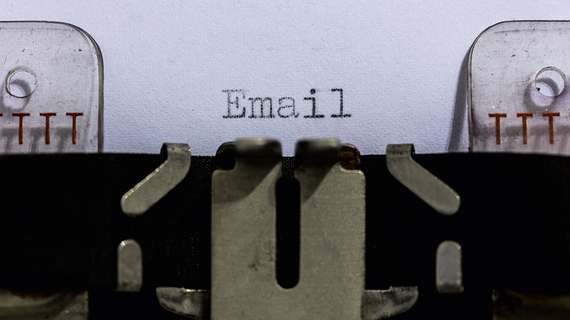Regain your time, attention, and energy from the email machine.
I've been studying the problem of email overload and compulsive email checking for a couple of years now. The problem is massive, but totally solvable.
Fortunately, over the years I've devised a way to organize email that works. I've taught it to several clients in different industries -- all report back that this method is a game-changer. Personally, I'm no longer plagued by email overload -- and not because I've just delegated it all to an assistant, though delegation is an awesome strategy if that is available to you.
To make email a more powerful and efficient tool, I have three main strategies. First, make compulsively checking email much less gratifying. Second, make checking email on a planned, set schedule much more gratifying. Finally, and most obviously, reduce the amount of time it takes to read and respond to email.
Here's how:
- You need a work account, where only email directed to you goes. No bulk email subscriptions, notifications, etc. will go to this account. If you are a stay-at-home parent, you can get away with two email accounts and skip this one.
- You need a personal account, where your friends and family can email you. Have personal notifications from kids' schools and invitations go here, for example, but not stuff that you want to read but will never need to respond to.
- Finally, and this is critical, you need a bulk account, where all of your subscriptions and newsletters go. This is the only email address you should give to a company or organization. This is also where you should send ALL your social media notifications. (This is a good account to use with Google Inbox, because it will sort this email into things you want to read, and stuff like receipts.)
You've now got a work inbox that contains only messages you need to read and respond to when you are working. You can check your personal email when you get home, and you can set aside time to read all the interesting stuff that comes into your bulk account when you aren't trying to get your work done.
2. Relentlessly unsubscribe. I mean it: Any newsletter or publication that you haven't read and found interesting in the past three months gets deep-sixed. Marie Kondo the heck out of your email inbox: If a subscription doesn't spark joy, unsubscribe. Just do it.
For most people, this is so much harder than it sounds, because of their FOMO (fear of missing out). Businesses rely on your FOMO to get their promotions in your hot little hands. Remember that every coupon is available with a quick Google search. So is every event calendar. And even every blog post. Unsubscribe, unsubscribe, unsubscribe.
3. Redesign how you schedule meetings and calls via email. This is especially true if there is a lot of back-and-forth in your email related to calendar items. Do your best to eliminate email correspondence related to "finding a time to..." I use Acuity Scheduling for everything work-related: calls, client meetings, media interviews, office hours, etc. I use the "meet" feature on Sunrise Calendar for personal stuff.
4. Schedule the time you will spend on email, and design your life up to follow-through on this. This is such an important step I wrote a whole other post about it. Read it here. DO NOT SKIP THIS STEP.
5. Get to inbox zero every single day. The first day you do this, you may have so many emails in your inbox that you need to declare email bankruptcy, or you may need to move ALL of the emails in your inbox to a folder to deal with at a later date.
This means you must block off enough time each day to get all the way to the bottom of your inbox in one way or another. If you need X hours a day to deal with your email, make sure you've scheduled X hours daily. Then, when you are in your scheduled time to read and respond to your email, respond to them all in one standard way or another. If a particular email is going to take more than five minutes to read and respond to, put it in a folder ("to do this week") and add whatever it entails to your task list. That email is a different kind of work now--it's a part of a project or something that requires more than just emailing.
6. Take your work email account off your home or personal computer and your phone. This is the truth: You can't efficiently respond to email from your phone; you can only monitor what is coming in. And this will keep you from being present wherever you are and doing whatever else you are supposed to be doing.
You are now a strategic email checker. You will respond thoughtfully and thoroughly to your emails. This will not hurt you at work; it will improve your standing.
(Do you check your work email on your phone when you're just waiting in line and want to "get stuff done"? That's a whole other problem. Don't do it. Let yourself daydream; it will make you more creative when you get back to work. At the very least, just give yourself a break, for crying out loud.)
7. Now take your personal email account and your bulk reading account off your work computer. The first time I checked my work email after doing this, I mostly felt disappointed. It was so much less stimulating. There was nothing in my inbox that I could just quickly delete, and nothing fun and stimulating (like this Pure Wow article) that you can read in 2 seconds.
This disappointment is super important, because it started to decrease my deep and persistent desire to check constantly. But another great thing happened: I got to the bottom of my inbox! I replied to everything, the same day I received it! How awesome! And satisfying! This accomplishment was so inherently rewarding that it started to reinforce my new, more strategic, email checking habit.
Good luck, everyone! If you need help with this, please submit your questions in the comment box, and join us for this webinar where I will talk you through this email-management method (and answer your questions).
Photo by Dennis Skley via flickr

